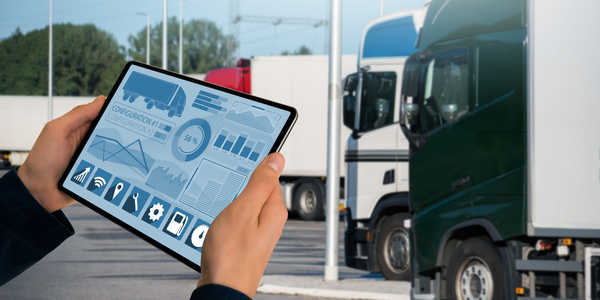Technology Category
- Infrastructure as a Service (IaaS) - Public Cloud
- Platform as a Service (PaaS) - Application Development Platforms
Applicable Industries
- Buildings
- Equipment & Machinery
Applicable Functions
- Sales & Marketing
Use Cases
- Autonomous Robots
- Smart Campus
Services
- Cloud Planning, Design & Implementation Services
- Hardware Design & Engineering Services
About The Customer
iRobot is a leading global consumer robot company that designs and builds robots to empower people to do more both inside and outside the home. The company created the home-cleaning robot category with the introduction of its Roomba Vacuuming Robot in 2002. Today, iRobot is a global enterprise that has sold more than 20 million robots worldwide. Its product line, including the Roomba and the Braava family of mopping robots, features proprietary technologies and advanced concepts in cleaning, mapping, and navigation. iRobot engineers are building an ecosystem of robots and data to enable the smart home.
The Challenge
iRobot, a global consumer robot company, faced a significant challenge in 2015. The company had sold 14,000 of its Roomba robotic vacuums on the first Amazon Prime Day, highlighting its reputation for innovation and value. However, this success also underscored a looming challenge. In September, iRobot was set to release its first internet-connected Roomba vacuums. Until then, iRobot had primarily operated as a hardware vendor. The introduction of connected Roomba vacuums meant that large numbers of people would be using the iRobot HOME App to set up and control their robots. This would result in high volumes of traffic through the app, requiring iRobot to run a high-availability, customer-facing cloud application and an Internet of Things (IoT) backend platform. This was a significant shift from their traditional business model and posed a considerable risk.
The Solution
iRobot decided to build its platform in the public cloud. Initially, they worked with a vendor that provided a turnkey solution for launching the first cloud-connected Roomba in September 2015. However, as the number of connected customers and services quickly multiplied, iRobot recognized it needed a solution that could scale more quickly and allowed for more direct control. The company decided to move its mission-critical platform to the Amazon Web Services (AWS) Cloud. AWS offered scalability, global availability, and a breadth of services. iRobot used about 25 AWS services, including AWS Lambda and the AWS IoT platform, to run the web applications that connect to the new Wi-Fi-connected Roomba vacuums. By using a serverless architecture based on AWS IoT and AWS Lambda, iRobot was able to keep the cost of the cloud platform low, avoid the need for subscription services, and manage the solution with fewer than 10 people.
Operational Impact
Quantitative Benefit

Case Study missing?
Start adding your own!
Register with your work email and create a new case study profile for your business.
Related Case Studies.

Case Study
Smart Water Filtration Systems
Before working with Ayla Networks, Ozner was already using cloud connectivity to identify and solve water-filtration system malfunctions as well as to monitor filter cartridges for replacements.But, in June 2015, Ozner executives talked with Ayla about how the company might further improve its water systems with IoT technology. They liked what they heard from Ayla, but the executives needed to be sure that Ayla’s Agile IoT Platform provided the security and reliability Ozner required.

Case Study
IoT enabled Fleet Management with MindSphere
In view of growing competition, Gämmerler had a strong need to remain competitive via process optimization, reliability and gentle handling of printed products, even at highest press speeds. In addition, a digitalization initiative also included developing a key differentiation via data-driven services offers.

Case Study
Predictive Maintenance for Industrial Chillers
For global leaders in the industrial chiller manufacturing, reliability of the entire production process is of the utmost importance. Chillers are refrigeration systems that produce ice water to provide cooling for a process or industrial application. One of those leaders sought a way to respond to asset performance issues, even before they occur. The intelligence to guarantee maximum reliability of cooling devices is embedded (pre-alarming). A pre-alarming phase means that the cooling device still works, but symptoms may appear, telling manufacturers that a failure is likely to occur in the near future. Chillers who are not internet connected at that moment, provide little insight in this pre-alarming phase.

Case Study
Premium Appliance Producer Innovates with Internet of Everything
Sub-Zero faced the largest product launch in the company’s history:It wanted to launch 60 new products as scheduled while simultaneously opening a new “greenfield” production facility, yet still adhering to stringent quality requirements and manage issues from new supply-chain partners. A the same time, it wanted to increase staff productivity time and collaboration while reducing travel and costs.

Case Study
Energy Saving & Power Monitoring System
Recently a university in Taiwan was experiencing dramatic power usage increases due to its growing number of campus buildings and students. Aiming to analyze their power consumption and increase their power efficiency across 52 buildings, the university wanted to build a power management system utilizing web-based hardware and software. With these goals in mind, they contacted Advantech to help them develop their system and provide them with the means to save energy in the years to come.

Case Study
Integration of PLC with IoT for Bosch Rexroth
The application arises from the need to monitor and anticipate the problems of one or more machines managed by a PLC. These problems, often resulting from the accumulation over time of small discrepancies, require, when they occur, ex post technical operations maintenance.

---nasdaq--amzn_14.jpg)

